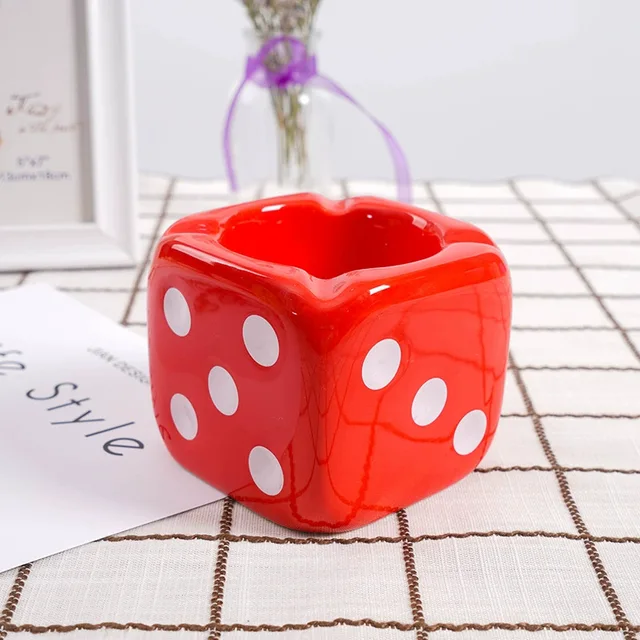
Introduction
Ashtrays are an essential accessory for smokers, providing a safe and convenient place to dispose of cigarette ashes and butts. Beyond their practical use, it can also serve as decorative items, reflecting personal style and enhancing the aesthetics of a space. This guide explores the different types, their materials, designs, and tips for selecting and maintaining the perfect for your needs.
The Evolution and Significance of Ashtrays
These have a long history and have evolved in design and function over the years:
- Historical Development: Early ashtrays were simple, utilitarian objects made from materials like clay and metal. Over time, they have become more refined and decorative.
- Cultural Significance: In many cultures, these are a common household item and are often used as gifts or collectibles. They can reflect social status, personal taste, and even artistic trends.
- Modern Use: Today, ashtrays are available in a wide variety of styles and materials, catering to both smokers and non-smokers who appreciate their aesthetic value.
Types of Ashtrays
These come in various types, each designed to meet different needs and preferences:
- Indoor Ashtrays:
- Tabletop : These are the most common type, designed to sit on a table or other flat surfaces. They come in a range of materials and styles, from classic glass to modern metal designs.
- Floor-Standing : Taller designed to stand on the floor, often seen in public places or outdoor areas. They can be both functional and decorative.
- Outdoor Ashtrays:
- Windproof : Designed with covers or specific shapes to prevent ashes from being blown away by the wind, making them ideal for use on patios or balconies.
- Wall-Mounted : Fixed to walls, often near entrances or designated smoking areas, providing a convenient disposal option without taking up floor space.
- Portable Ashtrays:
- Pocket : Small, compact that can be carried in a pocket or bag, ideal for smokers on the go. They often come with lids to contain ashes and odors.
- Travel : Slightly larger than pocket ashtrays, these are designed for use in cars or while traveling, ensuring that smokers always have a disposal option available.
Materials Used in Ashtrays
The material of it affects its durability, appearance, and ease of cleaning:
- Glass:
- Classic Choice: Glass ashtrays are popular for their clear, elegant appearance. They are easy to clean but can be fragile.
- Heat Resistance: High-quality glass can withstand high temperatures, making them suitable for regular use.
- Metal:
- Durability: Metal ashtrays, such as those made from stainless steel or brass, are highly durable and resistant to damage.
- Variety of Finishes: Metal come in various finishes, including polished, matte, and painted, offering a range of aesthetic options.
- Ceramic:
- Artistic Designs: Ceramic ashtrays are often handcrafted and can feature intricate designs and patterns. They are durable but can chip if handled roughly.
- Heat Resistance: Like glass, ceramic is heat-resistant and suitable for frequent use.
- Plastic:
- Affordability: Plastic are inexpensive and lightweight, making them ideal for casual or outdoor use.
- Variety: Available in numerous colors and shapes, plastic are versatile but may not be as heat-resistant as other materials.
- Stone:
- Natural Appeal: Stone ashtrays, such as those made from marble or granite, offer a natural, luxurious look. They are durable and often used as decorative pieces.
- Heat Resistance: Stone is inherently heat-resistant and suitable for regular use.
Choosing the Right Ashtray
Selecting the ideal ashtray involves considering several factors:
- Usage and Location:
- Indoor vs. Outdoor: Choose that suits the intended environment. Windproof or covered designs are better for outdoor use, while decorative options may be preferred indoors.
- Public vs. Private: For public places, consider larger, more durable options like floor-standing or wall-mounted . For personal use, tabletop or portable may be more appropriate.
- Capacity:
- Frequency of Use: If the ashtray will be used frequently, choose a larger capacity option to reduce the need for frequent emptying.
- Number of Smokers: Consider the number of smokers who will be using it. Larger groups may require bigger or multiple.
- Design and Aesthetic:
- Personal Style: Select an ashtray that complements your personal style and the decor of the space where it will be used.
- Functionality: Ensure the design is practical, with features like grooves to hold cigarettes and a stable base to prevent tipping.
- Maintenance and Cleaning:
- Ease of Cleaning: Choose materials that are easy to clean and maintain. Removable lids or components can make cleaning more convenient.
- Durability: Consider the longevity of the material and its resistance to wear and tear.
Maintaining Your Ashtray
Proper care and maintenance will extend the life of your ashtray and ensure it remains functional and attractive:
- Regular Cleaning:
- Empty Ashes: Regularly empty the ashes to prevent buildup and unpleasant odors.
- Wash Thoroughly: Clean the ashtray with warm soapy water. For stubborn stains, use a mild abrasive cleaner or a mixture of baking soda and water.
- Handling and Storage:
- Avoid Rough Handling: Be gentle with fragile materials like glass and ceramic to prevent chips and cracks.
- Proper Storage: Store in a dry, safe place when not in use to avoid damage.
- Special Care for Decorative:
- Protect Finishes: For metal ashtrays with special finishes, use appropriate cleaning products to avoid damaging the surface.
- Display Carefully: If using it as decorative pieces, place them in areas where they won’t be easily knocked over or damaged.
Conclusion
Ashtrays are essential tools for smokers, offering both practical and aesthetic benefits. By understanding the different types, materials, and designs available, you can choose the perfect to meet your needs and enhance your space. With proper care and maintenance, it can remain a functional and attractive part of your smoking accessories for years to come.


